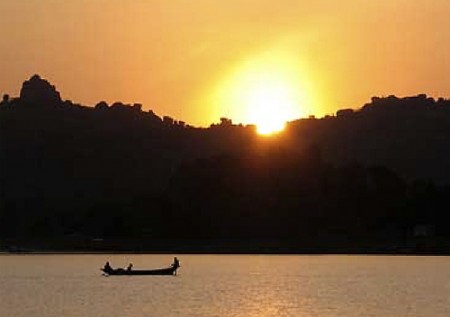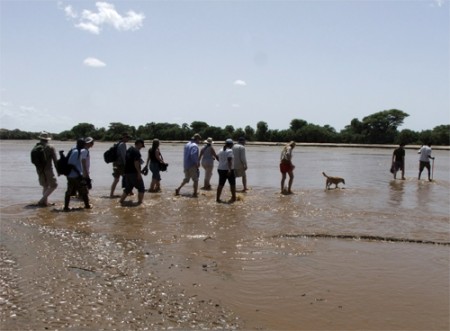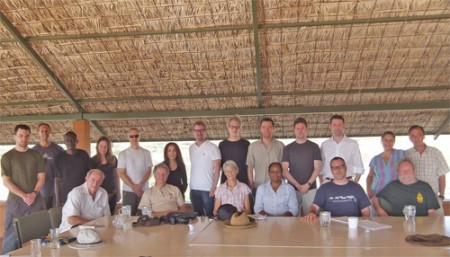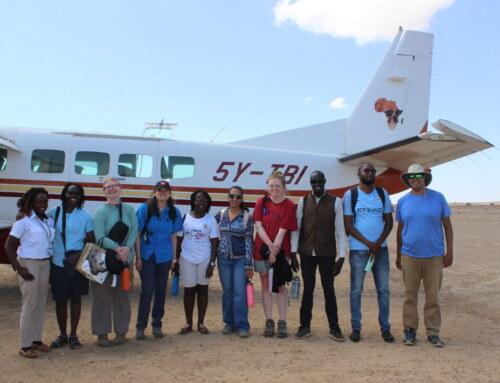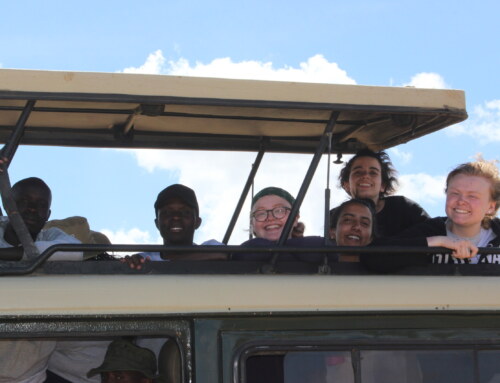One of the most challenging and interesting questions that has been pondered by scientists through the ages, from Aristotle to Darwin, through to the present day is where, when and how did we, humans, come about? This is a BIG question that perhaps almost everyone has asked at some point in our lives.
Human beings (Homo sapiens), are just one of over 1.9 million described species living on the planet (and there are millions more of species as yet unstudied or classified).
Today we hold the fate of many of the other species in our hands. How did we come to be in this position? Why have we been so successful as a species in a relatively short period of time?
To help explore this question, scientists from many different disciplines gathered this week at the Turkana Basin Institute at South Turkwel in the hot, sunny reaches of Northern Kenya to discuss ‘Theories of Human Evolution’. The aim of the meeting was to elaborate a clearer pattern of human evolution by synthesizing findings and discoveries from many different fields, and to see how that pattern can be explained with Darwinian ideas.
The meeting drew together scientists from a wide range of fields including human evolutionary biology, palaeontology, evolutionary psychology, behavioural ecology, evolutionary anthropology, genetics, archaeology, ecology and the history and philosophy of science.
The meeting was supported by the British Council through the Darwin Now! initiative as part of the bicentennial celebrating Darwin and his contributions to science. The meeting was organised by Robert Foley, Peter Kjaegaard and Richard Leakey and hosted at the Turkana Basin Institute by Richard Leakey, Meave Leakey and Lawrence Martin.
Over three days the scientists discussed and debated the human story starting with the split from our closest relatives, the other African apes, chimpanzees and gorillas, and going through many major events in human evolution including bipedalism (walking upright on two legs), stone tool-making, changes in diet, including hunting and scavenging for meat, the development of a large brain, the emergence of art, language and ‘cumulative culture’ that distinguishes us from other animals who can also engage in sophisticated behaviour and communication.
The discussions were broad, intense and at times excited. But the overall pattern that emerged was that we do know a lot more than even just a decade or two ago about our evolutionary story and when and where we came about. The core of the discussion was how this more complete evidence can used to develop a better understanding of how and why.
The scientists at this meeting represented a wide range of institutions and included Marta Mirazon-Lahr (Cambridge University), Robert Foley (Cambridge University), Peter Kjaegaard (Aarhaus University), Mark Collard (Simon Fraser University), Mark Maslin (University College London – UCL), Mark Thomas (UCL), Andrea Migliano (UCL), Eske Willerslev (Copenhagen University), Michael Ruse (University of Florida), Daniel Nettle (Newcastle University), Christoph Zollikoffer (Zurich University) Marcia Ponce de Leon (Zurich University), Ann Muigai (Jomo Kenyatta University of Agriculture and Technology) and Richard and Meave Leakey of the Turkana Basin Institute.
The meeting was also attended by Denis Misiko Mukhongo, Simon Schoenbuchner, Acacia Leakey and Dino Martins of the Turkana Basin Institute.

